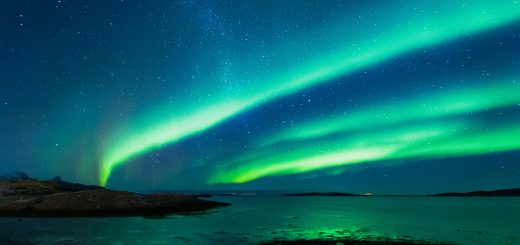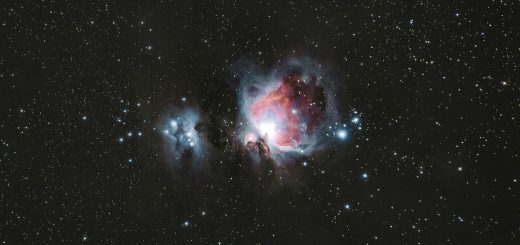When Did the Maya Civilization End? A Historical Perspective

Before diving in, please note: This post is for informational purposes only. If you’d like to know more about how we approach topics, feel free to check out our friendly Disclaimer Page.
Hey there, amazing readers! 🖐️ Just a quick note: yes, we know there are a lot of ads here. Trust us, we get it—it’s not the prettiest look, but they help us keep this blog alive and kicking. Those pesky little ads cover the costs of all the behind-the-scenes magic, from hosting and tech stuff to creating content we hope you’ll love.
We’re committed to delivering quality posts, and your support (even just sticking around despite the ads) means everything to us. So, bear with us, and thanks for helping us keep the good vibes rolling. Now, on to the fun stuff! 😉
TRANSLATE BUTTON AT THE END OF THE ARTICLE
A Quick Overview
When we talk about ancient civilizations, the Maya stand out as one of the most fascinating and complex societies.
Known for their remarkable advancements in architecture, mathematics, and astronomy, the Maya civilization offers a captivating glimpse into a world that thrived long before the arrival of Europeans.
But just like any great story, their tale has a beginning, a middle, and an end.
So, when did this civilization actually wrap up its grand performance?
Let’s dive into the rich history of the Maya, explore their rise and fall, and learn about their lasting legacy.
Introduction to the Enigmatic Maya Civilization
The Maya civilization, a treasure trove of culture and innovation, emerged in Mesoamerica around 2000 BC.
This civilization primarily spanned present-day Mexico, Guatemala, Belize, and parts of Honduras and El Salvador.
We often imagine the Maya as a mysterious society lost in the jungles, but they were vibrant, dynamic, and incredibly organized.
The Maya were divided into city-states, each with its own king and political structure.
These city-states were connected through trade, shared religious practices, and cultural exchanges.
I find it fascinating how their societies were complex but also very much localized.
Each city had its own character, just like how towns differ in personality today.
Their civilization reached its peak during the Classic Period, roughly spanning from 250 AD to 900 AD.
During these years, the Maya built magnificent temples, developed a sophisticated writing system, and made astronomical calculations that still amaze scientists today.
But as we know, even the brightest stars eventually dim.
The Rise of the Maya: A Flourishing Culture
The rise of the Maya was not happenstance; it was a product of several factors.
Agriculture played a pivotal role in their ascendance.
They cultivated crops such as maize, beans, and squash.
These staples formed the backbone of their diet and, consequently, their economy.
When the harvests were plentiful, cities flourished, and population growth surged.
Religion was another cornerstone of Maya life.
They worshipped a pantheon of gods, many of whom were associated with natural elements like the sun, rain, and maize.
This reverence for the divine shaped their daily routines, ceremonies, and monumental architecture.
The Maya were also skilled artisans and traders.
They crafted beautiful pottery, jade jewelry, and textiles that were highly valued in trade networks.
These trade routes helped disseminate ideas and innovations, creating a rich tapestry of cultural exchange.
Social stratification defined Maya society.
At the top were the nobles and priests, followed by artisans and traders, with farmers and laborers at the base.
This hierarchy helped maintain order and facilitated the construction of grand cities like Tikal and Calakmul, which boasted impressive pyramids and plazas.
The Maya’s ability to adapt to their environment also played a crucial role in their rise.
They developed advanced agricultural techniques like slash-and-burn farming and terracing, which allowed them to thrive in diverse landscapes.
Key Achievements of the Maya Civilization Explored
When we think of the Maya, several key achievements come to mind.
Their hieroglyphic writing system is one of the most complex in the world.
Unlike other ancient scripts, it combined logograms and syllabic symbols, allowing them to record their history, astronomy, and rituals.
It’s like they had their own secret language!
Their understanding of astronomy was astounding.
The Maya created an intricate calendar system, known as the Long Count, which tracked time across thousands of years.
They could predict celestial events, such as eclipses, with remarkable accuracy.
I can only imagine how they must have felt, gazing up at the stars and understanding their place in the cosmos.
Architecture is another area where the Maya excelled.
They built magnificent stone cities adorned with towering temples and intricate carvings.
The Temple of the Inscriptions at Palenque, for example, is a breathtaking feat of engineering and artistry.
It’s hard not to be awed by their creativity and labor.
Maya mathematics was also advanced.
They were among the first to use the concept of zero, a concept that many modern civilizations struggled with for centuries.
This mathematical prowess allowed them to perform complex calculations, which were essential for their astronomical observations and engineering projects.
Art was an integral part of Maya culture.
Their murals, pottery, and sculptures are not just beautiful; they tell stories about their gods, kings, and daily life.
Understanding the Classic Period of Maya History
The Classic Period of the Maya civilization is often considered its golden age.
Lasting from approximately 250 AD to 900 AD, this era saw unprecedented growth in population, culture, and political power.
During this time, the Maya established large city-states, each with its own rulers and unique identities.
Tikal, Calakmul, and Copán are among the most famous city-states from this period.
They were political and cultural hubs, often engaged in alliances and rivalries.
Surprisingly, despite their power, these city-states had no centralized government.
Instead, they operated independently, creating a mosaic of cultures and traditions.
The Classic Period was also marked by significant advancements in art and architecture.
The architectural style became more sophisticated, characterized by elaborate carvings and expansive plazas.
It’s fascinating to think that these structures were not just buildings; they were centers of spiritual and political life, designed to showcase the power of the rulers and their connection to the divine.
Religious practices flourished, with elaborate ceremonies conducted to appease the gods.
Human sacrifices, often of captured enemies, were part of these rituals.
These practices might seem shocking today, but they were integral to Maya spirituality.
Trade networks expanded during the Classic Period, connecting the Maya with other Mesoamerican cultures.
This exchange of goods and ideas contributed to their prosperity and cultural richness.
However, even in this golden era, signs of strain appeared.
Environmental degradation, conflicts, and social unrest hinted at the challenges that lay ahead.
The Mysterious Decline: What Happened to the Maya?
The decline of the Maya civilization is one of history’s great mysteries.
The Classic Period ended around 900 AD, leading to a significant reduction in population in many southern cities.
What caused this dramatic shift?
There’s no single answer, but various factors likely contributed.
One of the most significant clues lies in climate.
Studies of sediment cores from lakes reveal periods of severe drought coinciding with the decline of the Maya.
Imagine living in a society entirely dependent on agriculture while facing dwindling rainfall.
It must have been devastating for communities reliant on consistent crop yields.
Yet climate wasn’t the only player in this decline.
Warfare among city-states was rampant.
Political strife often led to conflicts, which further destabilized the region.
Cities that were once thriving became battlegrounds, contributing to their eventual abandonment.
Social changes also played a role.
The rigid class structure might have led to discontent among the lower classes.
People often revolt against inequality, especially during times of crisis.
This social unrest could have weakened the foundations of Maya society.
As resources became scarcer, trade networks likely suffered.
The loss of trade would have meant a reduction in goods and ideas flowing into these communities, leading to further isolation and decline.
Historians believe that the Maya didn’t just disappear overnight.
Instead, it was a gradual decline, with many people migrating to more stable areas.
Multiple Theories on the End of the Maya Civilization
Various theories have been proposed to explain the decline of the Maya civilization.
Each theory offers a unique lens through which we can understand this complex situation.
Environmental Factors: As mentioned, prolonged droughts likely had a severe impact on agriculture.
These studies have shown evidence of significant climate shifts that would have hampered their ability to feed a growing population.
Warfare: Increased competition among city-states led to conflicts.
Archaeological evidence shows that many cities bore signs of destruction and violence, suggesting that internal strife played a crucial role in their downfall.
Social Instability: As resources became limited, the rigid class system may have caused tensions.
We can imagine how unhappy citizens could turn against their rulers, especially when they felt neglected during times of hardship.
Economic Factors: The decline in trade networks might have led to economic collapse.
Without a steady flow of goods, cities would find it challenging to sustain their populations.
Cultural Reasons: Some scholars argue that the Maya may have experienced a cultural shift, moving away from the grand city-state model to smaller, more localized communities.
This shift could have been a response to the challenges they faced.
Each of these theories provides insight but none fully explains the complexity of the Maya’s decline.
It’s likely that a combination of these factors led to the gradual decline we observe in the archaeological record.
Environmental Factors: Nature’s Role in the Decline
The environment played a crucial role in the decline of the Maya civilization.
Climate change, particularly prolonged drought, is widely regarded as a significant factor.
Paleoclimatic studies indicate that the region experienced severe droughts during the late Classic Period, a time when the Maya were heavily reliant on agriculture.
Imagine being a farmer in the Maya world.
Your entire livelihood depends on the rainy season.
If that season fails, your crops wither, and food becomes scarce.
This situation likely led to food shortages, affecting not just farmers but the entire society.
Water management was another environmental challenge.
The Maya developed intricate systems for collecting and storing rainwater.
However, a series of dry years would have stressed these systems, leading to disputes over diminishing resources.
The landscape itself may have contributed to their plight.
Deforestation for agriculture and urban expansion could have exacerbated the effects of drought.
Without trees to retain moisture in the soil, the land may have become increasingly arid.
Ultimately, these environmental challenges created a perfect storm.
A combination of drought, resource depletion, and poor agricultural management likely led to significant societal stress.
Social Changes: The Impact of Warfare and Politics
Social changes within the Maya civilization also contributed to their decline.
The rise of powerful city-states during the Classic Period fostered competition and conflict.
As these states vied for dominance, warfare became a common occurrence.
In a world where power often dictated survival, the elite class might have focused their resources on military endeavors rather than social welfare.
This diversion of attention could have led to discontent among the lower classes.
Imagine a farmer watching his crops fail while the king spends resources on wars.
Resentment would likely brew.
This social rift may have fueled revolts, further destabilizing already fragile cities.
Moreover, the political structure of the Maya was highly decentralized.
Each city-state operated independently, leading to a patchwork of loyalties.
In times of crisis, this lack of unity could have made it difficult to respond effectively to external pressures such as drought or warfare.
As resources dwindled, the very foundation of Maya society began to crumble.
When the kings could no longer provide for their people, loyalty waned, and power shifted.
The Great Migration: Where Did the Maya Go?
As conditions worsened, many Maya people began to migrate.
But where did they go?
Archaeological evidence suggests that some moved to the northern Yucatán Peninsula.
This region had fewer large cities but offered a more sustainable environment for agriculture.
This migration wasn’t a single event but rather a gradual process.
Families would have relocated in search of better living conditions.
Some settled in small communities, while others joined existing populations in more stable areas.
Interestingly, while the large city-states fell into decline, the Maya were not completely gone.
Many continued to practice their traditions and maintain their cultural identity.
They adapted and thrived in new environments, showcasing their resilience.
In many ways, the migration was a survival strategy.
It was a chance to start anew, even if it meant leaving behind the grandeur of the past.
The Postclassic Period: Maya Resilience and Adaptation
The Postclassic Period, spanning from approximately 900 AD to the arrival of the Spanish in the 16th century, is often overshadowed by the glory of the Classic Period.
However, this era is vital for understanding the Maya’s resilience.
Though many southern cities were abandoned, new centers of power emerged in the northern regions.
Places like Chichen Itza and Mayapan became prominent, showcasing that the Maya were far from extinct.
During the Postclassic era, the Maya adapted their political structures.
New alliances formed, and trade routes shifted.
The civilization persisted, albeit in a different form.
Culturally, the Maya continued to practice their beliefs, although some elements adapted to new circumstances.
They retained their language, traditions, and agricultural practices, proving that cultural heritage can endure even in challenging times.
The Postclassic Period is a testament to the Maya’s ability to adapt and evolve.
Their survival in the face of adversity speaks to their ingenuity and strength.
Archaeological Discoveries: Unraveling the Past
Archaeology has played a crucial role in piecing together the story of the Maya.
Excavations across Mesoamerica have revealed stunning artifacts, architecture, and inscriptions that provide insights into their civilization.
For instance, researchers have uncovered monumental structures that showcase the architectural brilliance of the Maya.
The intricacy of their carvings tells tales of their religious beliefs, rulers, and everyday life.
Inscriptions found on stelae and altars have helped historians piece together the timelines of Maya kings and significant events.
These discoveries allow us to glimpse into their political and social structures.
Technological advancements have also aided archaeological efforts.
LiDAR (Light Detection and Ranging) technology has revealed previously hidden structures beneath dense jungle canopies, offering new perspectives on Maya urban planning.
Each excavation, each artifact, adds to the tapestry of Maya history.
It’s like putting together a jigsaw puzzle, where every piece brings us closer to understanding their world.
Conclusion: The Legacy of the Maya Civilization Today
The Maya civilization may have experienced decline, but its legacy endures.
Today, millions of people in Central America identify as descendants of the ancient Maya, preserving their language, traditions, and cultural practices.
Modern Maya communities continue to honor their ancestors through festivals, rituals, and art.
Their vibrant culture thrives, reminding us of the remarkable achievements of their predecessors.
Additionally, the archaeological study of the Maya civilization has inspired countless researchers, historians, and enthusiasts.
The lessons learned from their rise and fall resonate today as we navigate our own challenges.
So, when did the Maya civilization end?
It’s a complex story.
While the Classic cities dwindled around 900 AD, the Maya people adapted, migrated, and evolved into the cultures we see today.
Their story is a powerful reminder of resilience, ingenuity, and the enduring spirit of human civilization.

The Enlightenment Journey is a remarkable collection of writings authored by a distinguished group of experts in the fields of spirituality, new age, and esoteric knowledge.
This anthology features a diverse assembly of well-experienced authors who bring their profound insights and credible perspectives to the forefront.
Each contributor possesses a wealth of knowledge and wisdom, making them authorities in their respective domains.
Together, they offer readers a transformative journey into the realms of spiritual growth, self-discovery, and esoteric enlightenment.
The Enlightenment Journey is a testament to the collective expertise of these luminaries, providing readers with a rich tapestry of ideas and information to illuminate their spiritual path.
Our Diverse Expertise 🌟
While our primary focus is on spirituality and esotericism, we are equally passionate about exploring a wide range of other topics and niches 🌍📚. Our experienced team is dedicated to delivering high-quality, informative content across various subjects ✨.
To ensure we provide the most accurate and valuable insights, we collaborate with trusted experts in their respective domains 🧑🏫👩🏫. This allows us to offer well-rounded perspectives and knowledge to our readers.
Our blog originally focused on spirituality and metaphysics, but we’ve since expanded to cover a wide range of niches. Don’t worry—we continue to publish a lot of articles on spirituality! Frequently visit our blog to explore our diverse content and stay tuned for more insightful reads.





